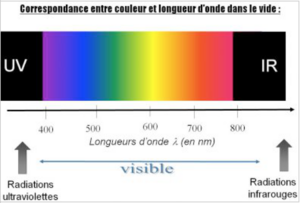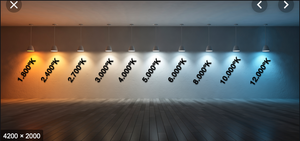Basics of Lighting
Introduction : Light Workshop « THE BASICS »
Small history of light at the theater:
For centuries the show is usually played in natural light.
First traces of "light faking" during Greek tragedies, where a mirror system was sometimes used to capture the last rays of sun, creating a visual effect to announce the coming of the Savior God ...
In the Renaissance, the theater enters the walls again and expensive candles are used for lighting, in chandeliers that enlighten the public as well as the stage.
The architects of Italian theaters do the first research on lighting, using bowls of barbers well polished as reflectors.
First known effects end XVI:
Playing with color through bozze, small balls of glass filled with different colored liquids to filter the light.
Invention of cylinders connected to wires are used to obscure the light at a distance.
In 1640, installation of the ramp and the first chandelier (candlelight) at the Cardinal Palace (Paris).
The ramp is a series of lamps installed on the ground at the front of the stage, which creates a more or less uniform lighting of the scene but particularly unnatural ... It is said that the conventional duration of an act corresponds to the duration of consumption of candles (20mn), which was replaced at intermission.
In 1784, the quinquets, new oil lamps particularly effective, replace the candles at the French Comedy.
In 1804, it is the gas that appears at the Lyceum Theater in London. The gas will allow major changes in scenic lighting.
In 1820, the first organ play appeared at the Théâtre de l'Odéon in Paris: the gas pipes of the various lamps pass through a place where an operator can regulate the gas flow of each lamp in order to be able to vary its intensity. .
In 1826, the invention of limelight by Englishman Goldsworthy Gurney allowed a bright enough light to create the first projector.
In 1846, arc lamps powered by many batteries were used for a sun effect. But this lighting can not be graduated and remains less flexible than gas, so it is only used for special effects.
In the 1880s, incandescent lighting spread to completely replace gas at the end of the century.
These new possibilities modify the role of light in the show, and will also have repercussions on the scenography: the light is now able to create marked shadows, which offers great possibilities but swears with the shadows painted on the backdrops ... we must rethink the scenography (decorations in three dimensions) as much as the role of light.
The pioneers of modern scenography:
Appia (1862-1928), for example, first places a diffuse light to see the elements, then adds an active light that will create the shadows and mood of the scene. (I do the opposite, I start with the main light and then I balance with a diffuse light or "secondary").
Craig (1872-1966) uses light to create spaces.
Far from the search for realism in the 19th century, light becomes a source of dramatic expression more by suggestion than by imitation of nature. This is the scenographic revolution of the twentieth century.
The lighting design appears in Brodway for economic reasons (producers finding that directors spent too much time creating their lighting.)
In the United States we have already been studying stage lighting at the university for several years. In 1925, Stanley MacCandless taught lighting at Yale, where he published A method of Lighting the Stage, still considered today a reference
In 1950, Jean Vilar entrusted the realization of his lighting to Pierre Saveron, first French lighting designer.
the characteristics of the light:
Through this technical knowledge and artistic sensitivity, the lighting designer works on the 3 characteristics of light that are:
The direction
The intensity
The colour (more developed by ENESE AND JAN )
And on top, the quality : (more developed by JAN)
I will add a fourth characteristic of light, which I call Quality and which is not mentioned in the books of light. But it is also important to be able to define the way the light resonates with a setting, an object, an actor. (hard / soft, shiny / matte …)
Equipment and experimentation :
In practice :
we will put on a stand all sources of traditional lights present in this theater, see how they are handled and what are their characteristics:
body, optics, power, aperture, light quality, beam uniformity, sharpness, ... disassemble a lens ...
-see also the light by reflection, (white surface, survey blanket)"live superamas the army"
-the movement, see : a fan, "l'Enfer of clouzot" ."Ghost writer Miet Warlop". "Thriller Diederik Peters"
-non"traditional" light sources: bulbs, led, fluos, flashlights, candles, …(more developed by JAN tuesday afternoon)
- talk about machines to make for specific effects: "superamas wet bikini performence", rainbow "youdream", "empire" fireworks.
The colour :
Located between the infrared and the ultraviolet, the visible spectrum occupies only a very small place in the complete electromagnetic spectrum. Visible light is only the area of electromagnetic waves to which our eyes are receptive. Other animals or insects do not have the same vision as us: their spectrum of visibility can be shifted in the IR (mosquitoes) or in the UV (bees).
Our eyes are sensitive only between 400 and 800 nm wavelength. Our retina contains 3 types of photochemical receptors and our brain turns this into colors that we have called "red", "orange", etc., "purple". But we must realize that the visible spectrum contains an infinity of colored shades. By mixing colored lights, new colors can be invented.
To qualify the colors, we define the color temperature (expressed in Kelvin (K)). Generally, hot (color temperature <3000K) or cool (color temperature> 3000K) will be used. The warmer a color is visually, the lower its thermal temperature (in Kelvin).
The reference white for the cameras is calibrated at 3200 K.
The daylight is at 5800 K (ref LEE 201, the north light at Zenith, (without direct light from the rays of the sun which are warmer)
In practice :
To experiment the color, nothing better than to put 3 cuttings with 3 primary threads: red LEE 106, green 139, blue 120.
Illuminate a white screen.
Compare with the diagram below:
It will also be relevant to evoke the psychological dimension of color.
See: https://www.verywellmind.com/color-psychology-2795824
-And talk about diffusion filters
The direction :
I will speak about the naturalistic, and psychological aspect of the angle :
meaning of the sens of reading from the light source to the object. (the eye always goes from the most lite to the less, it's physiological)
The full face without shadow: christ, politician.
In practice :
We will put one PC on a stand and see what we feel with differents angles
Intensity:
The light is measured in Lux, Lumen or foot candles (USA).
Examples and orders of magnitude:
- A candle emits approximately 12 lm (see the passage of candelas with lumens with the following formula: a lumen = a candela x 4π for an isotropic and homogeneous source)
- A 14 W fluorescent tube produces 1250 lm at 25 ° C
- A 2000 W metal halide lamp produces about 200,000 lm
- An LED module of 8 W can produce 1300 lm.
Very important: The intensity decreases according to the square of the distance
In practice: -We will place a PC at 2m50 of the cyclo, another at 5m and a third at 10m and see for the same opening the difference in light intensity.
-Use the light console and experiment with dimming lamps.
The composition of a light sequence :
When a lighting designer becomes a composer of this strange orchestra and can play with time and intensity :
the lighting designer must imagine a dramaturgy of the light, in connection, in counterpoint in reasoning or in free style with the dramaturgy of the piece and compose a sequence taking into account all these parameters.
there are several schools.
Some render their light manually, others record them in a light board, many combine recording and manual. it is sometimes necessary to create new computer tools to create different ways of programing the light and from that, new ways of perceiving light. (more developed by BRUNO)
Moreover, this can avoid overly complex programming or create real-time interactions between the stage, sound and the light. (More developed by bruno and I)

